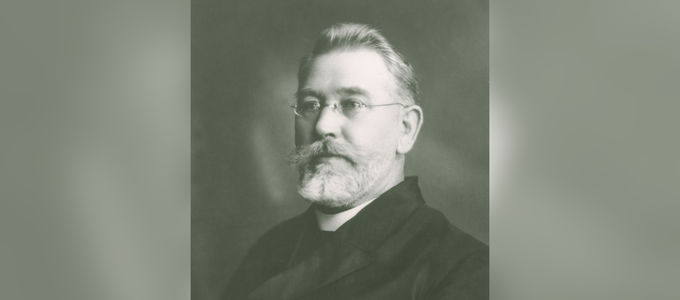
For more than a decade, there were two denominations that carried the name “New Apostolic Church” in South Africa. Between 1913 and 1926 Apostle Carl Georg Klibbe, who was the more senior of the two, and Apostle Schlaphoff each led one of the New Apostolic Churches. The case was finally settled in court.
For more than a decade, there were two denominations that carried the name “New Apostolic Church” in South Africa. Between 1913 and 1926 Apostle Carl Georg Klibbe and the newly ordained Apostle Schlaphoff each led one of the New Apostolic Churches. The case was finally settled in court.
The beginnings
Georg Heinrich Wilhelm Schlaphoff was born on 14 February 1867 in the north of Germany. When he was seven years old, his father died, which threw the family into great financial difficulties. He apprenticed as a shoemaker and received his master’s diploma but failed to make a living from it. He decided to emigrate to South Africa in 1890—it was the time of the South African gold rush.
In East London in the Eastern Cape he found a new home and became acquainted with the first New Apostolic congregation in South Africa. On Pentecost 1902 Wilhelm Schlaphoff and his family were sealed by Apostle Klibbe. He, a former Lutheran pastor, was also from Germany and had emigrated to South Africa following stopovers in Scotland and Australia.
Establishing the Church
Together they established the New Apostolic Church in South Africa. In 1903 the Apostle dispatched the newly ordained Evangelist-Deacon to Cape Town. At first, Wilhelm Schlaphoff conducted services in his own home, later on in rented premises, and as of 1906 in the Church’s first own church building, Claremont. The sermons were conducted in German at the time, so that the neighbours always talked about the German Apostolic church.
The pattern was repeated. Whenever a congregation was doing well, new ministers were ordained and dispatched to begin with mission work in new cities. Before long, congregations were established in Port Elizabeth, Durban, and Johannesburg. In 1910 the Church was officially registered as “The New Apostolic Church (Africa)”.
The conflict
That same year, Apostle Klibbe called his companion into the Bishop ministry, but in 1912 he downgraded him to the rank of District Elder. Wilhelm Schlaphoff wanted to clear the matter up and contacted Chief Apostle Hermann Niehaus. But Carl Klibbe—like his mentor Apostle Heinrich Friedrich Niemeyer in Australia—had issues with the ministry of the Church leader: he rejected the pre-eminent position of the Chief Apostle.
This did not go unnoticed in Germany. On 28 July 1913 the Apostles’ Council in Quelle debated the question of how they could help the African congregations now that Apostle Klibbe had gone his own way. The answer followed on 21 September 1913: Wilhelm Schlaphoff received the Apostle ministry for Africa.
New beginnings
More problems were in store for the new Apostle in South Africa. With the outbreak of World War One, Schlaphoff, being of German descent, was interned in 1914. Although he was released after a few years, he was subject to strict travel restrictions.
The Apostles Schlaphoff and Klibbe met again in court. Case 432 of the year 1926 involved the name which both men claimed for their church. Following the court hearing, the two parties reached an agreement, and Klibbe carried on his activities under the name “The Old Apostolic Church of Africa”.
The New Apostolic Church (Africa) had nearly 40 congregations and about 7,000 members when Apostle Schlaphoff set out on a journey to visit all the congregations. When he arrived in Johannesburg he suddenly became ill and passed away. This was in July 1928. His successor, Heinrich Franz Schlaphoff, who was very dynamic not only continued his father’s work but consolidated it. .




